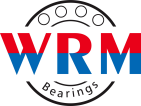
How to do when bearing has vibration damage
Vibration damage to bearings can be caused by a variety of factors, including misalignment, unbalanced loads, or worn bearings. Here are some steps to take when a bearing has vibration damage:
1. Identify the cause of the vibration: Determine the root cause of the vibration by inspecting the bearing and the surrounding equipment. Check for signs of misalignment, unbalanced loads, or worn bearings.
2. Replace damaged bearings: If the bearing is damaged or worn, it should be replaced immediately. Continuing to use a damaged bearing can cause further damage to the equipment and potentially cause safety hazards.
3. Balance the load: If the vibration is caused by unbalanced loads, the load should be balanced to distribute the weight evenly. This can help prevent future damage to the bearings.
4. Align the equipment: If the vibration is caused by misalignment, the equipment should be aligned properly. Misalignment can cause uneven wear on the bearings, leading to vibration and damage.
5. Use proper lubrication: Proper lubrication is essential to reduce friction and wear on the bearings. Use the recommended lubricant and apply it according to the manufacturer’s instructions.
6. Inspect regularly: Regular inspections can help identify any signs of wear or damage to the bearings. Look for signs of corrosion, pitting, or cracks.By following these steps, you can reduce vibration damage to bearings and ensure the longevity and optimal performance of the equipment.

